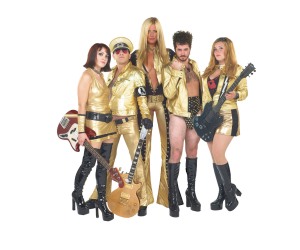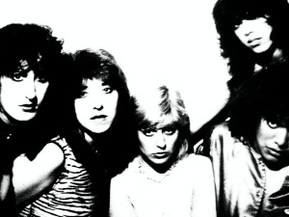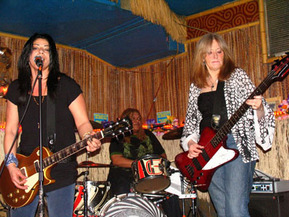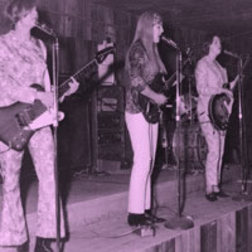Daughters of Eve
Debi Pomeroy and Andrea Levin Parnes share their recollections of being members of Chicago’s first all-girl band.
By Bess Korey
An edited version of this story appeared in the Spring 2009 issue of Ugly Things. I first found out about this band back in the ’90s when I acquired volume 1 of Girls in the Garage and they left an impression on me that has lasted until this day.
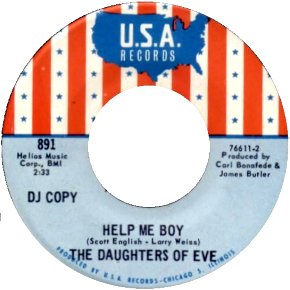
During the mid-late 1960’s, the Rogers Park/Edgewater neighborhoods of Chicago were a hotbed of youth culture activity. Senn High School, located on Ridge Road, near Hollywood Avenue, was the home base of two local bands, the Daughters of Eve and the Dirty Wurds. It was more than just the High School that tied these bands together, a pair of siblings played an integral part in the formation of these groups as well. Debi and Justin Pomeroy shared a love and enthusiasm for music that was encouraged by their father, whom happened to be a Pastor. He went on to be nicknamed the “Rock N’ Roll Preacher”, for being willing to go above and beyond the call of duty to help his kids make their musical dreams come true. When Justin started a Chicago Blues influenced, Garage Band, called the Dirty Wurds, the “Rock N’ Roll Preacher” became their manager. In an era when the idea of women playing in Rock bands was seen as an anomaly, Debi’s father was still willing to nurture her musical aspirations as well.
The renowned Chicago Music Institution, Old Town School of Folk Music, which was located by Wells Street and North Avenue at the time, ended up playing a key role in the Pomeroys’ musical story. Justin and Debi were both enthralled with the Folk music scene which was occurring there, and it inspired them to re-create that scene in their own neighborhood of Edgewater, which was located about 20 minutes north of the school. Debi says, “I was studying at the Old Town School of Folk Music, which is where I learned to play guitar, and my brother and I were having hootenannies in our basement. We’d go down to Old Town School of Folk Music and we’d beg these Folk artists to come perform at our hootenannies, and they would. We had the stage set up, and the lighting, and it would be packed [with people]. We had great music, and we’d have a lot of our friends playing. It was just all about music back in those days, and it continued on when I started in the Daughters of Eve.”
Andrea “Andee” Levin [Parnes] was learning to play guitar around the same time Debi was, and also took inspiration from the Folk scene. “I was really interested in Folk music. I was listening to Joan Baez, Bob Dylan, Peter, Paul & Mary, and I was copying all of their stuff. I would put the needle on the record and listen and try to figure out what chord it was, and continue back and forth, and then finally I ended up knowing what I was doing, and practiced so hard that I was actually getting quite good at Folk music.”
At that time, Debi, Justin and Andrea were all attending Senn. Justin stood out at school for being a rebel that was ahead of his time. He was the first guy there to have long hair, and it was before the hippies had made it fashionable. Andrea ended up meeting Justin before she met Debi, and was able to bond with him over their love of Folk. It wasn’t until Justin had invited her over to the Pomeroy house that Debi was able to meet her. The house was connected to their father’s church, which had a gymnasium inside of it, and the kids were able to use it as a music practice space.
Debi vividly remembers the first time she saw Andrea. “She [Andrea] came over to the house, she had long red hair, and she always wore black, and I thought, ‘Wow, that’s a pretty cool chick. Who is she?’ I was getting ready for rehearsal with my surf band and I had to carry all of my equipment to the church gymnasium. We were in the gym, [Andrea was there] so I asked, “Who is she?” [And was told], “Oh that’s Andee.”
Debi played lead guitar in that surf band and was the only female member. Becoming friends with Andrea gave her a chance to play music with girls too. Andrea, Debi and a friend named Sue started a trio together where they all played guitar and sang. This trio played together just for fun, but it foreshadows the musical direction that both Andrea and Debi would end up going in soon after that.
Debi was never intimidated by the fact that the world of mid-‘60s Rock music was male dominated. Her passion for music drove her past the boundaries of what was feminine and what was masculine. Feminine was being a folkie and playing acoustic guitar. She rejected this notion by playing electric guitar, and then she developed an interest in playing drums, and that became her instrument of choice. Debi’s involvement in Rock musicianship proves that Justin wasn’t the only member of the Pomeroy family that was ahead of their time. This was 10 years before Heart and the Runaways, and the idea of women as Rock musicians was hardly a blip on the mainstream radar. But just because the mainstream was unaware of the fact that women wanted to play Rock music, doesn’t mean that this desire didn’t exist. Debi wasn’t alone; there were many other women that had developed the same interest, and they went on to start bands like: the Luv’d Ones, Hairem/She, the Ace of Cups, the Feminine Complex, the Daisy Chain, the Shaggs, and a plethora of others. In the 2000’s, many of these groups have finally gotten the recognition they deserve, and have even had their music re-released by labels like Sundazed and Ace Records, but for the decades preceding that, they were mostly forgotten, and the chauvinistic nature of music journalism could perhaps be blamed for their omission from the annals of Rock history.
Andrea had been following the female folkie path before Debi had come into her life. Even after they became friends, she hadn’t developed much of an interest in playing Rock music, but this was soon to change. Debi’s transformation from guitarist to drummer led to an important musical opportunity being presented her way. This happened during 1966 when she was 15 years old. Debi says, “Carl Bonafede [who was a famous Chicago DJ, and the manager of the Buckinghams; a Chicago group who went on to national renown with hits like “Kind Of A Drag” and “Mercy, Mercy, Mercy” ] was looking to start an all-girl band [to be the Buckinghams’ sister group]. Marsha Tomal [Guitar and Vocals] and Judy Johnson [Also on Guitar and Vocals, had already both joined the group at that point] knew John, a friend of mine at the time, and we were jamming in the basement [of her house, her brother was there too, and she was playing someone else’s drum kit], and John said, “Hey, would you like to audition for an all-girl band? You play really good drums.” [And she said], “But I don’t have a drum kit.” And he said that was ok, that I could bring the kit in the basement [to the audition] and told me about the band and how they had management. So we went out to Marsha’s house, and I auditioned [for Carl] and I guess I did everything right. Carl said, “Wow, we’ve got to get you a set of drums!” So he went over to talk to my parents, and said “Debi’s a really good drummer.” and asked for my parents to buy me a set of drums.”
-
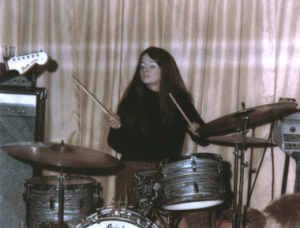
Debi Pomeroy on the drums with Daughters of Eve.
This group would go on to be called the Daughters of Eve [DOE]. The “Rock N’ Roll Preacher” was the one who coined this name. He had mentioned that all girls were the Daughters of Eve, and those involved agreed that it would be a good name for the group. Marsha, Judy and Debi became a fixture of the group, but the line-up wasn’t quite cemented yet. Andrea says, “Debi, being a drummer, was recruited to be in an all-girl band. It was Marsha, Judy and Debi, and some bass player, whose name I don’t even know, because she apparently flaked out all of the time and never made it to rehearsals. There was this one Saturday that Debi invited Sue and I [to DOE’s practice], so we went there and they couldn’t start their practice because the bass player didn’t show up. So Carl was going nuts, ranting and raving, and the band was bummed out because they couldn’t practice without the bass player there. Up until this point, I had never picked up a bass. But I was good musician, I knew my music, so I said, “How bout I fill in until she gets here?” So they gave me a [bass] guitar and I just started playing. I don’t even know how I knew how to do it [play bass] but I just did. I guess Carl was impressed, because he asked if I wanted to be in the band.”
Because of her Folk background, Andrea had some reservations about joining a Rock band, but it was ultimately her parents that made the decision for her. Carl had called them up and was able to charm them into letting their daughter join the band. Andrea reluctantly agreed to do it. This reluctance did not stick with her in the long run, and she started to enjoy being in the band.
Carl was all business and wasted no time in getting some gigs together for the girls once Andrea was in the band. Though the fact that they were an all-girl band was enough to make them a novelty, Carl still wanted them to have a gimmick, and that was for them to wear matching outfits. Andrea recalls one of the outfits that they had to wear with much disdain. “We ended up with these outfits that were so God awful, they were like green jeans and a burgundy colored velour V neck, and not only were they God awful, but we actually had pictures taken in them. That was the first uniform when we actually got work.”
Once they had begun gigging, interest quickly grew in the band, and they started to draw a following. The girls were received well, even by male audiences, and Andrea feels as if it was more than just the novelty factor which drew people to them. She says, “We had a good sound and a good energy, and the audience was always very receptive, just thrilled. I never felt that anyone was looking at us going, “Oh My God, who do they think they are?” It was like, “Wow, you guys are great, and you’re girls!” It was a novelty, but I don’t think they were thrilled [with the band’s performances], or just liked us, [only] cuz it was a novelty. They really liked the music.”
Debi also felt as if the audience reaction to their band was very positive, and was even able to compare their smaller scale of success with that of the Beatles. She says, “I got to go to their [The Beatles] concert and after that day, I just couldn’t believe what kind of impact they had on people, especially the girls. And then when I got into Daughters of Eve, and we played, it felt kind of like the same feeling, because all the boys [in the audience] got all crazy, since they had never seen an all-girl band play [before]. When you’re young like that, you can go, “Wow, we’re like the Beatles!” It’s such a fantastic feeling to have people like you, and want to hear you play.”
The band’s success with Andrea as a member ended up being pretty short lived. She had only been 13 at the time she joined, and found herself in the middle of a tug of war between her parents and Carl. Debi says, “It just so happened that Judy’s parents didn’t get along with Carl, and Andee’s parents didn’t get along with Carl. It was a constant struggle. That was the only bad part about the whole thing, when you’re young, because you’re at your parents’ mercy.”
These circumstances had an affect on Andrea prematurely exiting the band. The group continued on without her, but Debi feels as if things weren’t the same. This definitely had to do with the fact that Andrea and her were such close friends. But despite that, Debi stuck with the band, and remained their drummer up until their demise in late 1968. The band had two other bass players before they broke up, a girl that Debi had known who was named Mary Lou, and a girl who Carl had found who was named Lori Wax.
During their two and a half years together, they put out 4 singles, all of which remain hard to find today and have never been released together on a CD [Note: Debi has these songs in her own personal collection, and would like to put them out on CD someday]. As for their musical output which can be obtained at this current time, their breathtaking cover of the Animals’ “Help Me Girl”, which was gender-bended and re-titled, “Help Me Boy”, can be heard on the compilation, Girls With Guitars [Ace Records]. The dreamy, otherworldly sound of the music, and the enchanting vocals, entices the listener, and makes their version stand out dramatically from the original Animals’ track. A more upbeat, as compared to the melancholic feel of the former song, surf influenced number, “Don’t Waste My Time” can be heard on Illinois in the ’60s: Volume 1 of the Psychedelic States [Gear Fab] and on Volume 1 of the ’90s compilation series, Girls In The Garage [Romulan Records].
All these years later, Andrea and Debi remain friends. Although both women no longer live in Chicago, having both relocated to California since the ’60s, music remains an important part of their lives. More than 40 years later, Debi continues to play drums, and has created an extremely lengthy band resume for herself; which included a brief association with an all-girl Garage band from Michigan called the Luv’d Ones, whose lead singer and guitarist, Char[lotte] Vinnedge, was thought of by Debi, and by others, as the female version of Jimi Hendrix. Before leaving Chicago, Debi was also in another all-female group of a different genre, Country, called Jeannie Wright and the Western Wonders. After moving to L.A. during the late ’60s, Debi went on to play with numerous other groups including Marlane and the Swinging Dolls, and the drummer she replaced in that group, Jenny Jones, became a famous Talk Show host in the ’90s. Her drumming skills even drew the attention of Rock Svengali, Kim Fowley, who considered adding her to the line-up of his soon to be legendary all-girl band, The Runaways, but changed his mind when he found out that she was older than her young looking appearance. The Runaways, like their predecessors DOE, were meant to be a teen only band. DOE had even turned away a female musician in her 20s who wanted to join because she was considered too old, and ironically enough, the same thing ended up happening to Debi 10 years later.
After DOE, Andrea was in another all-female, Chicago group, called the Weaker Sex. It was a bit of a departure from her former band, being a 6-piece group, including horns, and having a funkier sound. After moving to California, shortly before Debi did in 1969, Andrea decided to give up the Rock N’ Roll Lifestyle, and became a wife and mother. Her love of music remained permanently ingrained in her, and even though she was no longer playing in bands, she took on the profession of being a music teacher, and continues to impart her musical wisdom on students today. Andrea, as well as Debi, come across as much younger than the middle-aged women that they are, and this definitely has to do with the fact that neither of them has let go of the youthful, rebellious spirit of Rock N’ Roll that began to shape their lives when they were in DOE.
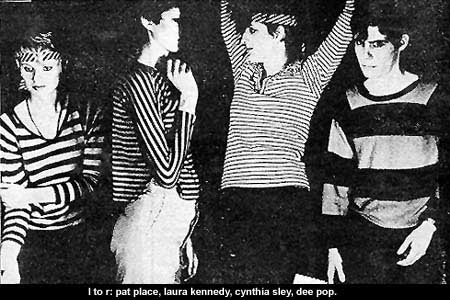

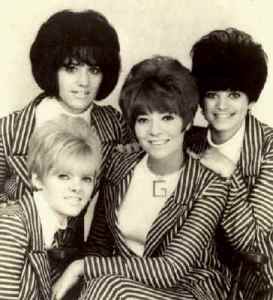
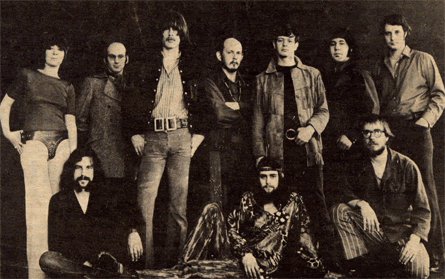


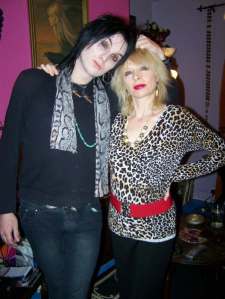

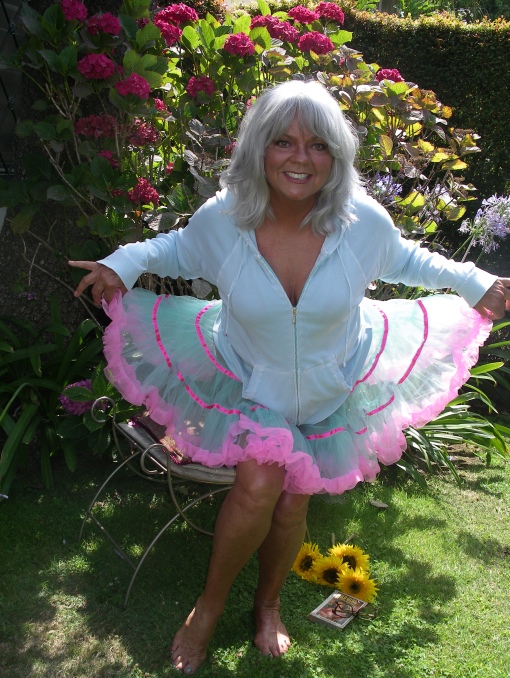
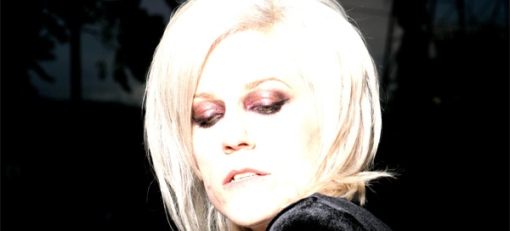
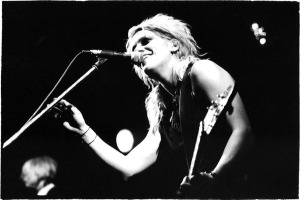
![_38039899_platform_shoes[1] Platform Boot](https://girlsinthegarage.wordpress.com/wp-content/uploads/2010/07/38039899_platform_shoes1.jpg?w=510)
